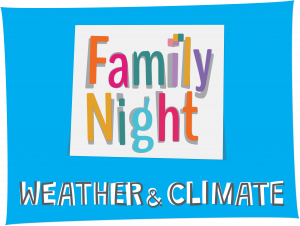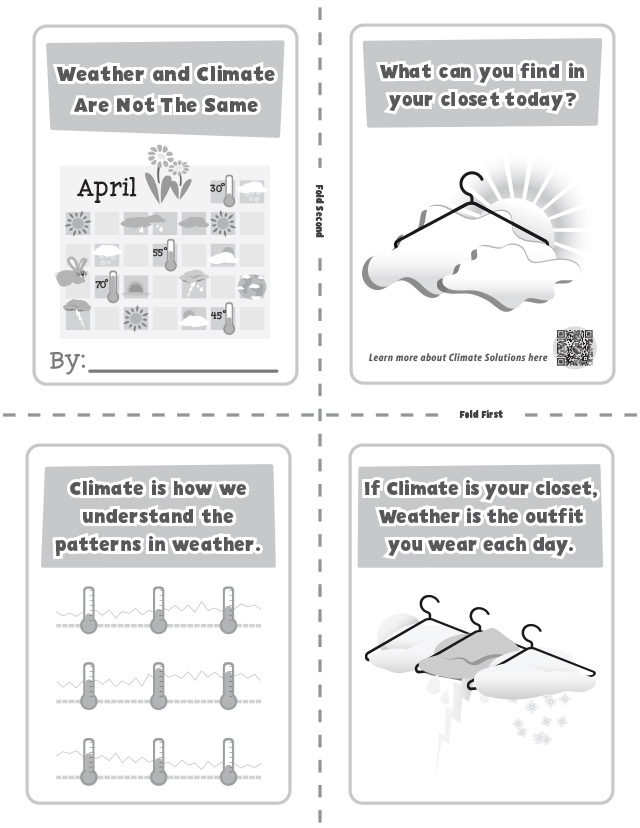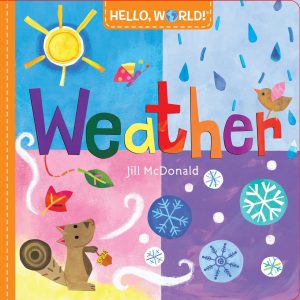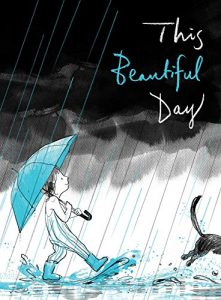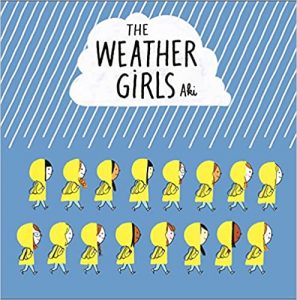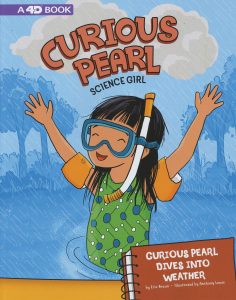Resources & Activities
Talk About It
After watching the program, ask:
- What job was the most interesting to you? Why?
- What is something new that you learned?
- What is your favorite kind of weather? Why?
What are your thoughts about how we can do a better job taking care of our planet?
Standard: 1.5.K-5.C – Ask and answer questions…to clarify comprehension, gather additional information, or deepen understanding of a topic or issue. 1.4.K-5.I / 1.4.K-5.O / Support the opinion with reasons that include details… / Include thoughts and feelings to describe experiences and events.
3.5.4.C – Know basic weather elements 3.5.7.B – Recognize earth resources and how they affect everyday life. 13.1.3/5.A – Recognize that individuals have unique interests. 13.1.3/5.B – Identify current personal interests.
Remember
When children learn something new, reminding them of that learning through play or practice can help those new concepts stick.
Revisit the weather tools you made during Family Night. Imagine what other tools might help you in thinking about the weather. Talk about the patterns in weather that children see. Compare that to climate. How are they the same? How are they different?
Standard: 3.1.4.C – Illustrate patterns that regularly occur and reoccur in nature. 3.2.4.A – Identify and use the nature of scientific and technological knowledge. 3.2.4.C – Recognize and use the elements of scientific inquiry to solve problems.3.5.4.C – Know basic weather elements. 3.5.4.D – Recognize the earth’s different water resources. 3.5.7.B – Recognize earth resources and how they affect everyday life.
Try This
Make a Book
In English (PDF) En español (PDF)
Standard: 3.1.4.C – Illustrate patterns that regularly occur and reoccur in nature. 3.2.4.A – Identify and use the nature of scientific and technological knowledge.3.5.4.C – Know basic weather elements.
Keep a weather journal
Write or draw about the weather children are experiencing outside. Fold some paper in half to create your journal. Add pages as needed. Compare weather as seasons change.
Standard: 3.1.4.C – Illustrate patterns that regularly occur and reoccur in nature. 3.2.4.A – Identify and use the nature of scientific and technological knowledge.3.5.4.C – Know basic weather elements. 1.4.K-2.B Use a combination of drawing, dictating, and writing.
The Art of Weather
Use weather experiences to inspire poems or other art expressions. Ask “What color does rain make you think of? How does it make you feel on your body and in your mind?”
Standard: 3.1.4.C – Illustrate patterns that regularly occur and reoccur in nature. 3.2.4.B – Describe objects in the world using the five senses. 3.5.4.C – Know basic weather elements. 16.1.PK-K.A – Distinguish between emotions and identify socially accepted ways to express them.
Create a biome
Biome in a Baggie Activity (PDF)
Standard: 3.1.4.C – Illustrate patterns that regularly occur and reoccur in nature. 3.2.4.A – Identify and use the nature of scientific and technological knowledge. 3.2.4.C – Recognize and use the elements of scientific inquiry to solve problems. 3.3.4.A – Know the similarities and differences of living things. 3.3.4.B – Know that living things are made up of parts that have specific functions. 3.5.4.C – Know basic weather elements.
Explore the Wind
What kind of tools can help us move air? Try creating wind by blowing, waving your hands, and fanning the air with objects. Play a cloud blowing race by using a straw (your tool to blow air) and cotton balls (clouds). Measure and compare how far the cotton balls move. What happens when you blow harder? Softer? You can also try a similar experiment using your breath as a tool to blow a tin foil ball, plastic cup and other light objects. Which objects move farther?
Try making a kite using a brown paper lunch bag. Open the bag and punch a hole on each side of the open part. String one yard of yarn through each hole and gather all the ends together in a knot. Keep the bag open and take it outside on a windy and a non-windy day. How does your kite behave differently?
Standard: 3.1.4.C – Illustrate patterns that regularly occur and reoccur in nature. 3.2.4.C – Recognize and use the elements of scientific inquiry to solve problems. 3.4.4.C – Observe and describe different types of force and motion. 3.5.4.C – Know basic weather elements.
Read About It
There are lots of great books about weather and climate that you can pick up at your local library.
Stories about changing weather – preschool -3rd grade
Each Family Night program will feature book recommendations from a local librarian in the Commonwealth. Family Night: Weather & Climate book suggestions are from Kristen Janci, Youth Services and Outreach Coordinator/District Youth Consultant at the B. F. Jones Memorial Library in Beaver County.
Learn More
Resources
- Visit a Weather Station
- Weather & Climate | Earth and Space Science Resources | PBS LearningMedia
- Finding the Dew Point | PBS LearningMedia
- U.S. Fish & Wildlife Service Learning Resources
- Our Changing Climate and the U.S. Fish and Wildlife Service
- Wildlife & Wildlands Toolkit
- NASA Climate Kids
Resources for Adults
Lots more to explore at pbslearningmedia.org! This free resource allows you to access so many of the great assets of PBS and you can search by topic, content area and age. Many of the video or audio clips also include PA Standards-based lesson plans ready for you to use right now!

